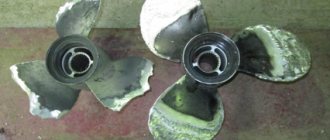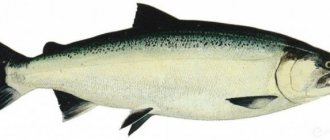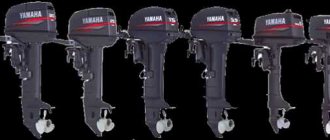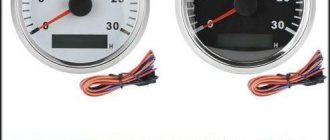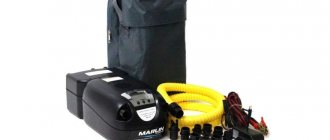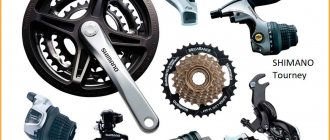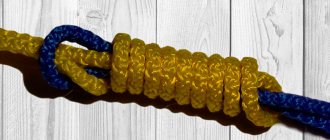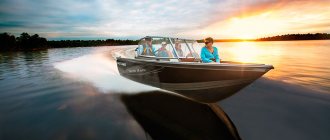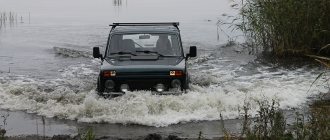Popularity of 10 HP outboard motors. With. due to the fact that, according to the current legislation of the Russian Federation, small vessels equipped with engines with a power of up to 10.88 liters. With. no need to register with supervisory authorities. The capabilities of such power units are quite sufficient for the needs of most hunters and fishermen.
Many recreationalists consider Mercury and Yamaha outboard motors as a suitable option for purchasing. Let’s compare these brands and try to determine which is better using the example of two models with similar characteristics.
Japanese traditions
Founded at the end of the 19th century, the Japanese company Yamaha gradually developed, expanding its range of products. In 1960, it first launched the production of outboard boat motors. Today, fans of the brand have access to a wide range of technically advanced and reliable engines, developing, depending on the modification, power from 2 to 350 hp. With.
In the category up to 10 l. With. models of the F 9.9 J family with a capacity of 9.9 liters are presented. With. They are available in two versions, designed for installation on boats with different transom heights:
| Motor | Type | Transom height |
| J.M.H.S. | Standard | 15 inches (381 mm) |
| JMHL | Extended | 20 inches (508 mm) |
Users and technical experts include the following advantages of engines of this line:
- Low noise operation at low and medium speeds.
- Good pickup.
- Reliability and solid resource.
- Simplicity and convenience of tiller control.
- Efficient operation of the microprocessor ignition system, ensuring easy engine starting.
- Moderate, for engines of this class - an average of 3.9 liters per hour - fuel consumption.
However, there are also disadvantages, the most significant of which are:
- High cost of purchase and operation. Both the motor itself and consumables are more expensive than products from less famous companies.
- The need for operation on high-octane – AI-95 – fuel.
Together with the propeller, the Yamaha F 9.9 JMHS weighs 40 kilograms.
Useful video about Yamaha outboard motors
Durability of outboard motors
A modern outboard motor deserves the highest rating. This is a brilliant combination of high power and low weight in one small unit. Currently, even 7.5 liter engines. With. have an electric starter.
A modern outboard motor deserves the highest rating. This is a brilliant combination of high power and low weight in one small unit. No type of boat engine has had so many stages of development in a short time. Initially, the winding cable trigger was replaced by a spring trigger. Then the ignition system was improved to produce powerful sparks in the spark plugs when started manually. Currently, even 7.5 liter engines. With. have an electric starter, and for engines with a power of 20 hp. With. he became ordinary. In 1949, switchable reverse gear appeared for the first time.
Previously, the fuel tank was installed on top of the engine. Now tanks equipped with a quick-connect device are supplied separately, making the engine lighter and the fuel supply increased. The release of gases through the propeller hub, introduced by the Mercury company, has proven itself well. They began to use it at factories of other companies. Shock-absorbing suspensions and engine sound insulation were introduced. Motor protection against corrosion in sea water has been significantly improved, although this problem has not been solved to date.
The power of outboard motors is constantly increasing. Ten years ago the power was 70 hp. With. was considered huge. Currently, all large factories produce engines with a capacity of 100-155 hp. s, which can operate at maximum load for a long time, especially on racing boats.
Almost all outboard motors operate on a two-stroke cycle. The advantage of a two-stroke engine is the combination of high power and low weight.
Previously, due to the addition of lubricating oil to the fuel, the spark plugs quickly became oily and needed to be cleaned every 20-50 hours of operation. Thanks to the replacement of sliding bearings in the engine with roller bearings, as well as the improved quality of special lubricating oil, we were able to change the previously existing proportion of the components of the mixture from 1: 12-1: 16 (1 part oil to 12-16 parts gasoline) to 1: 50 and even up to 1: 100. This has now made it possible to clean the spark plugs after 200 hours of engine operation.
A separate fuel tank can be used with an outboard motor power of 5 HP or more. With.; electric starter - from 7.5 l. With; manual starter - up to 60 l. With. Remote control can be purchased for any motor with a power of 5 HP or more. With.
The service life of an outboard motor, as already mentioned, is influenced by three main factors: operation in fresh or salt water, frequency of use and owner care. Nevertheless, we will try to determine the average service life of the motor.
In factories, engines under test are often run for 5,000 hours with only short breaks for inspection and maintenance. Our shipyard personnel were also able to achieve 5,000 hours of continuous engine operation without major repairs. Through major overhauls, as well as minor periodic repairs, the life of a well-maintained outboard motor can be extended to 10,000 hours.
The service life of the motor used on sports boats is different. The outboard motor has the greatest success in water skiing, as it tolerates changes in speed from low to high. The ignition system, heat exchange, and rotation speed are adjusted to maximum power, reduced to approximately 3/4 of the highest. It is undesirable to use a two-stroke engine for a long time at partial load, as well as to store it for a long time during occasional short-term use, since corrosion (internal and external) is more pronounced during inactivity.
Direct observations in repair shops made it possible to establish the following types of engine damage:
destruction of its internal walls as a result of wear due to the use of fuel without adding oil; burnout of the piston crowns due to too strong ignition and heavy load on the engine during racing; failure of roller bearings and gears due to irregular lubrication of the underwater part of the motor.
If the outboard motor is dropped into water, it must be immediately disassembled and dried for 24 hours, as corrosion will render the crankshaft and bearings unsuitable for further use.
Small motors tend to be more durable than larger ones: they are easier to care for and easier to take into the garage for cleaning.
Let's compare the data below on the service life of outboard motors.
If the operating time of the motor is taken on average to be 200 hours per year, then the durability of a small engine with a power of up to 12 hp. can reach 10 years. True, it is also necessary to take into account repair work, which increases after five years.
Large engines ranging from 50 to 125 hp. On average, they are used for three years before the first repair. After five years of operation, maintenance and repair of engines become unprofitable and are used reluctantly for sporting purposes. Sold at reduced prices, they are often used for business purposes for a number of years. Regular use of engines has a positive effect on their performance.
The indicated motor resources were observed when operating engines in river water. When used in seawater, the problem of corrosion arises to a greater extent. Since few outboard motor owners thoroughly rinse them with fresh water after each use, motor operating hours should be reduced. How long? It depends only on the owner himself.
Let's compare the three most important types of machine installations. A stationary engine has a long service life, good efficiency, and is economical to operate.
The Z-gear engine has the following features: limited service life of the Z-gear, good efficiency. only for light speedboats, simplified engine installation.
The outboard motor has a short service life, lightest weight and maximum power, suitable as the main engine for light speed boats. Low-power outboard motors are installed on small boats.
December 5, 2011 at 07:08
American approach
If for the Japanese manufacturer outboard motors are only part of the product range, then for the American company Mercury Mariner this is the main product, which the company has been manufacturing since 1940. Despite its narrow specialization, the US-registered brand successfully competes with Japanese industrial giants Honda and Yamaha. You can verify this by taking a closer look at the Mercury F 9.9 MH engine.
Like its direct competitor, the Yamaha F 9.9 J, the American outboard motor is available in two versions, designed for installation on regular and extended standard transoms. Users praise this model for:
- Modest fuel consumption, under normal operating conditions is about 3.5 liters per hour.
- Undemanding to fuel. The design provides for the possibility of operating the engine on A-92 gasoline.
- The presence of a powerful (75 watt) generator, which not only recharges the battery, but also powers other devices that consume electricity.
- Possibility of locking in 5 positions when capsizing, which is convenient when the boat moves in shallow water.
But when purchasing this unit, one should not forget about its inherent disadvantages. Mercury F 9.9 MH is criticized for:
- High, compared to analogues, cost of accessories and consumables.
- Excessive noise and rapid overheating when operating at high speeds.
The weight of the assembled outboard motor is 38 kg.
Both engines are in-line, two-cylinder, four-stroke. Equipped with a water cooling system and an automatic lubrication system. A comparison of Yamaha and Mercury engines shows that these are similar power units in terms of characteristics, which fully justify the purchase costs, despite the rather high cost. They do not require frequent repairs, and if the operating rules are followed and timely maintenance, they faithfully serve their owners, providing small boats with good dynamics for their power class and a solid power reserve.
Useful video about American and Japanese-made Mercury engines
First engine start
Before starting the engine for the first time, you need to check how securely the engine is screwed to the transom of the boat with clamps. Start a 3 HP Yamaha outboard motor. With. only needed in neutral. If the propeller is difficult to turn by hand, then the motor is at speed and it is necessary to turn on “neutral” with a special switch on the motor housing.
Having completed all the manipulations and briefly checked the engine, you can start starting. Outboard motor "Yamaha" 3 l. With. It is a two-stroke engine and does not have a lubrication system like four-stroke engines. For a two-stroke engine, lubrication is carried out by mixing gasoline with engine oil. If the engine does not start, you need to check whether the fuel tap and the valve in the fuel tank cap are open.
Comparison with analogues
Of course, on the market you can find many four-stroke outboard motors with similar technical characteristics. For clarity, their main parameters are shown in the summary table:
| Model | Number of cylinders / displacement (cc. cm) | Power, l. With. | Assembled weight, kg | Average fuel consumption, l/hour. | Octane number of gasoline | Price, rubles |
| Yamaha F 9.9 J, Japan | 2 / 212 | 9,9 | 40 | 3,5 | AI-95 | 183 800 |
| Mercury F 9.9MH, USA | 2 / 208 | 9,9 | 38 | 4,0 | AI-92 | 149 900 |
| Honda BF10SHU, Japan | 2 / 222 | 9,9 | 42 | 3,0 | AI-95 | 205 900 |
| Suzuki DF9.9AS, Japan | 2 / 208 | 9,9 | 39,5 | 3,3 | AI-92 | 172 000 |
| Tohatsu MFS9.8B, Japan | 2 / 209 | 9,8 | 41 | 3,9 | AI-95 | 160 500 |
| Parsun F 9.8 BMS, China | 2 / 209 | 9,8 | 38 | 3,0 | AI-92 | 111 000 |
| Hidea HDF9.9HS, China | 2 / 212 | 9,9 | 40 | 3,6 | — | 120 500 |
| NS Marine NMF 9.8 BS, Japan | 2 / 209 | 9,8 | 35,5 | 3,8 | AI-92 | 149 900 |
| Mikatsu MF9.9FHS, Korea | 2 / 212 | 9,9 | 41 | 3,2 | AI-92 | 129 900 |
Prices are for 2021. Stores in your area may vary. Fuel consumption is approximate, as it depends on operating conditions and the characteristics of the watercraft on which the outboard motor is installed.
Read more about Suzuki outboard motors →
Advantages and disadvantages of popular models
Among the most popular models are the following:
- Single cylinder YAMAHA 5CMH. Famous for starting from half a turn, it reaches maximum speed. Has the best technical characteristics. The only negative is the high price.
- TOHATSU M 5B DS. Ideal for those who value excellent quality at a reasonable price. A miracle of engineering technology, high reliability of the design with small dimensions. The disadvantage is the requirement for the fuel used. TOHATSU M 5B DS is capricious in this regard and consumes only AU-92 gasoline.
- MERCURY 5M. Popular model thanks to the constant introduction of innovative ideas. The only drawback is the manual lifting of the propeller.
So, the choice is yours, dear motorboat owners! But remember the main thing: the correct choice of motor depends on what type of vessel it is intended for, and on the type of body of water where it will be used. Happy fishing and, as the sea wolves say, seven feet under the keel!
Miser pays twice
Manufacturers from China and South Korea attract buyers with affordable prices. However, the quality of their products, at least for now, is inferior to outboard motors produced by Japanese and American leaders in the market segment. And the Italian brand Selva, despite all its efforts, has not managed to gain a foothold in the Russian market.
It's no secret that companies from China often simply copy successful models of their competitors. But in the absence of technology, this does not give the desired results, and copies are inferior to the originals in reliability and important technical characteristics. This must not be forgotten under any circumstances.
On large and small bodies of water, on long journeys, far from populated areas, the reliability and performance of an outboard boat motor is often a decisive factor.
Unfortunately, many lovers of water recreation, suffering with an engine that does not want to start or does not develop full power, realize too late that it would have been better to pay an extra 30 - 40 thousand rubles for a product of a famous brand, rather than end up in a difficult situation due to the desire to save money .
The Yamaha F 9.9 J and Mercury F 9.9 MH have excellent reliability and performance. Only proven engineering solutions are used in their design. It is impossible to say unequivocally which outboard motor is better when comparing these two models. The Yamaha is a little more responsive. Mercury is a little cheaper. But both power units deserve close attention. With proper maintenance and operation, they last for many years, justifying the cost of purchase.
Author: Igor Filippov, especially for Motoaria.ru
Get specific with your goals
Before you begin to specifically select a motor model, you need to decide for what purposes you need it. It is the nature of the upcoming tasks that will determine the optimal power and almost all other technical parameters, as well as, of course, the price of the unit.
Let's consider a practical situation:
- the motor is selected for fishing;
- There are no plans for long-distance voyages in search of fishing spots;
- a calm body of water - a river with a slow current or even a lake.
In such conditions, power and performance will not be so critical; it is better to focus on the lightness of the engine and fuel efficiency. In addition, a budget class engine is quite suitable for the above tasks.
Boat Altai 320L with Tonar motor 42 120 for 1 piece. Boat Altai A340 with Tonar motor 51,030 for 1 piece. PVC boat Compact Riviera 3200 SK camouflage reed Riviera 38,970 for 1 piece. Boat Captain A320 (inflatable bottom) green Tonar 39,680 for 1 piece. Boat Altai 400A (gray, inflatable bottom) Tonar 67,020 for 1 pc. PVC boat AQUA 3200 SKK (slang-book, keel) Aqua 27,230 for 1 piece. PVC boat AQUA 3200 NDND Aqua 33,410 for 1 piece. Boat Skipper A260nt (hinged transom, inflatable bottom) (green) Tonar 17,805 for 1 piece. PVC boat AQUA 2800 for Aqua motor 16,520 for 1 piece.
Now another situation close to reality:
- the owner of the boat wants to develop the highest possible speed on it;
- the boat is large, roomy and heavy, most likely with a rigid folding bottom.
For such conditions, high motor power is important, as well as its reliability - it must withstand long-term overloads. In this case, you need to be prepared to pay a hefty sum for the motor; in addition, it will be quite bulky and heavy.
Of course, the examples given are close to extremes, but at the same time they objectively characterize the needs of many buyers. Therefore, now let’s talk about the important parameters separately.
Transportation
Ideally, the outboard motor should be transported in an upright position. A two-stroke engine can be transported on any side, with the exception of the side where the gear lever is located. Naturally, the engine itself in a recumbent position should be higher than the “boot”. Sew or buy a cover for the motor. The cover will also protect the interior of your car, and in the event of an oil leak, you will be able to notice exactly where it happened.
After installing the motor on the transom and fixing it with clamps, as a precaution, tie it either with a cord or a metal cable to the hull of the boat. This precaution has saved the engine more than once.
